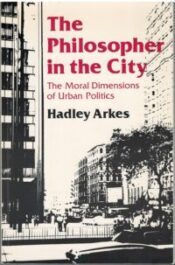
The More Things Change …
“He has erected a multitude of new offices, and sent hither swarms of officers to harass our people, and eat out their substance.
He has combined with others to subject us to a jurisdiction foreign to our constitution, and unacknowledged by our laws; giving his assent to their acts of pretended legislation…â€
These words from the Declaration of Independence were penned in 1776 to describe King George III of England, but they could describe the ruling US authority in 2011. If the accuracy of that observation is questionable, the arrogance of the 111th Congress and a recently released GAO report, (“Opportunities to Reduce Potential Duplication in Government Programs, Save Tax Dollars, and Enhance Revenueâ€) should dispel doubts.
The GAO report identifies “federal programs, agencies, offices, and initiatives, either within departments or government wide, which have duplicative goals or activities†and whose elimination “could potentially save billions of taxpayer dollars annually,â€
Talk about eating out our substance!
The GAO report opens a window on federal inefficiency and waste, but it does more than that. It reveals the extent of federal breaches of the Constitution.
The GAO, of course, is not concerned with the constitutionality of the programs it analyzed. As the title of the report indicates, it is the GAO’s job to “save tax dollars and enhance revenue.â€
In a letter to members of Congress introducing the report, Gene L. Dodaro, Comptroller General of the United States, writes, “financial benefits ranging from the tens of millions to several billion dollars annually may be realized†by addressing “a single issue†delineated in the report. (The report is 345 pages long!)
As an example, Dodaro suggests that federal revenue losses could be “reduced by up to $5.7 billion annually by addressing potentially duplicative policies designed to boost domestic ethanol production.â€
The GAO, of course, does not question the constitutionality of subsidizing ethanol production. Nor does it question subsidies for politically favored businesses, euphemistically called “investments†by the current administration that, like agricultural subsidies, subvert the free market, narrow consumer choices, raise prices and increase the deficit.
The GAO does reveal that the Department of Agriculture is a spending swamp that, if drained, would achieve “cost savings of as much as $5 billion annually.â€
A 2009 CATO report on farm subsidies substantiates GAO’s findings and examines their deleterious effects on the economy.
Although policymakers love to discuss the plight of the small farmer, the bulk of federal farm subsidies goes to the largest farms.  For example, the largest 10 percent of recipients have received 72 percent of all subsidy payments in recent years. Numerous large corporations and even some wealthy celebrities receive farm subsidies because they are the owners of farmland. It is landowners, not tenant farmers or farm workers, who benefit from subsidies.†In short, federal welfare for farm businesses is costly to taxpayers, distorts the economy. Induces farmers to overproduce, “which pushes down prices and creates political demands for further subsidies.
The GAO also analyzed research tax credits.
Since 1981, the research tax credit has provided significant subsidies (an estimated $6 billion for fiscal year 2011) to encourage business to invest in research and development. The credit, which has been a temporary provision since its inception, was most recently renewed at the end of 2010 and is scheduled to expire after December 31, 2011… Two factors—the definition of research expenses that qualify for the credit and the credit’s design—are important in targeting the subsidy in a manner that increases the social benefits stimulated per dollar of tax revenue foregone…
The bureaucratize translated means that Washington-based technocrats  decide what constitutes “social benefits†and what companies, having been judged virtuous, benefit from tax credits.
Imagine having a competitor who has Uncle Sam as his partner!
While Congress is engaged in efforts to remedy the abuses identified by the GAO, it should not fail to address the fundamental problem: Extensions of federal power that far exceed constitutional limits. Not only has Congress allowed the Executive branch to assume legislative authority, but some members believe “the federal government can do most anything it wants in this country.â€Â In fact, those are the very words uttered by Congressman Pete Stark of California when questioned by a constituent about the constitutionality of the Affordable Health Care Act.
The 10th Amendment states:
The powers not delegated to the United States by the Constitution, nor prohibited by it to the States, are reserved to the States respectively, or to the people.
Or as James Madison wrote in Federalist 45:
The powers delegated by the proposed Constitution to the federal government are few and defined. Those which are to remain to the State governments are numerous and indefinite.
Washington has turned the 10th Amendment on its head. It’s now the federal government whose powers are numerous and indefinite and the states’ prerogatives that are few (and shrinking).
Reading the Constitution aloud in the House of Representatives in the opening days of the 112th Congress was a nice symbolic gesture. But symbols are supposed to stand for something.
Ending programs that can’t pass a 10th Amendment test, (and refusing to authorize new ones) would give the symbolism meaning. It would also reveal which members of Congress meant it when they swore to protect and defend the Constitution.
 The posts are coming!
The posts are coming!

0 comments
Kick things off by filling out the form below.
Leave a Comment